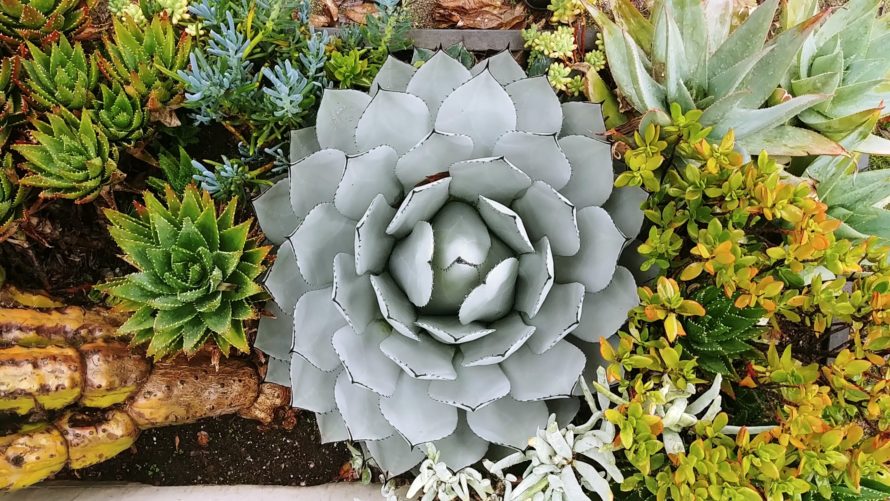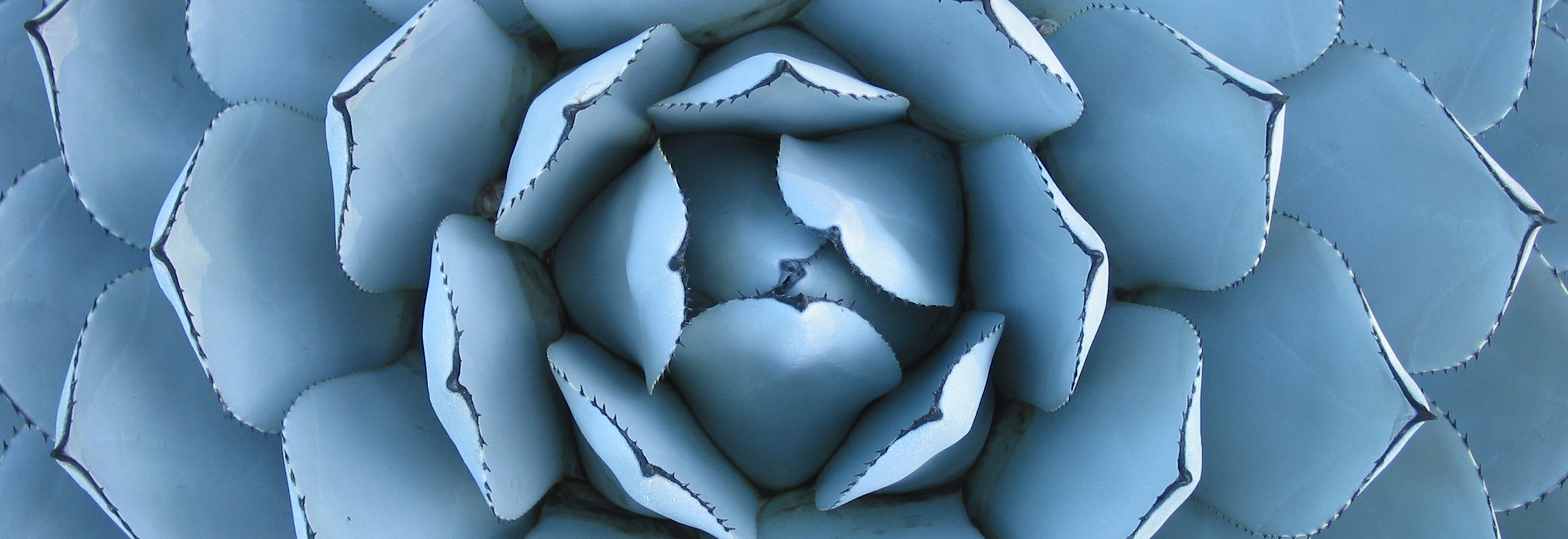— Corey Andrikopoulos, Gamble Garden Director, June 2023
Propagating succulents is an easy, fun, and rewarding activity to do in your home garden. Plant propagation, simply put, is the process of growing new plants from mature material. Some species of succulents are more difficult to propagate than others, but many can be propagated using just a few common techniques. Seeds are the most common way succulents propagate in the wild, but at home we typically use vegetative propagation methods that allow us to create new plants more quickly and reliably than from seed. Vegetative propagation can be achieved using leaf cuttings, stem cuttings, or from offshoots.
Propagation from a leaf cutting works best with succulents that have plump, fleshy leaves, such as Crassula or Sedum. With your thumb and forefinger, gently twist the leaf to remove it from the plant. Make sure to get the entire leaf including the base where it attaches to the stem. Choose healthy leaves that are plump and not discolored, damaged, or misshapen. After removing the leaf, place it somewhere warm, but out of direct sunlight to allow the wound to dry out and become calloused. The wound must be allowed to heal prior to planting to protect it from rot. Once the wound is healed (usually 2-7 days), the leaf can be planted into a suitable growing medium, such as a mixture of perlite and sand or a high quality cactus potting soil. Rooting hormone can be used to aid this process, but is often not necessary for succulents. Mist the leaves and soil every 1-2 days, or when the soil is dry. New roots should begin to form in about 4-6 weeks. Plants should be kept out of direct sunlight during this time. Once the new plant is rooted and well established, it can be slowly exposed to more intense sunlight.
The process of using stem cuttings for succulent propagation is similar to using leaf cuttings. This technique often has a higher success rate than using leaf cutting, but requires more plant material to achieve. Prior to taking stem cutting it is important to disinfect your tools with rubbing alcohol to avoid the introduction of bacteria or fungi into the wound. Using a sharp knife or scissors cut a piece of stem just below a leaf axil. Peel the bottom leaves off the cut piece to expose 2-4 inches of stem. Allow the cutting to heal before planting. Once calloused, plant the cutting by burying the stem up to the lower leaves. Water the cutting every few days or when the soil feels dry. Slowly acclimate your new plant to full sun once it is well established.
Some succulents can essentially clone themselves by forming offshoots. Propagating plants that produce offshoots is as simple as separating the offshoot from the mother plant and placing it in a suitable growing substrate. This method has better success when the offshoots have already rooted. Care should be taken to get as much of the root as possible when separating the offshoot from the mother plant. Keep the baby plant in a shaded area and slowly acclimate it to the sun once established.
You can propagate succulents any time of the year, but the start of the growing season is ideal. Propagation of healthy, actively growing plants will be more successful than plants showing indications of stress. For this reason, it is best not to try to propagate plants during periods of extreme hot or cold weather, or right after flowering when plants are naturally stressed. For more detailed information on propagating succulents please visit the Gamble Garden Horticultural Library where you will find many excellent books on plant propagation, or check out the websites below:
- How to Propagate Succulents: Complete Beginner’s Guide
- 4 Easy Ways to Propagate Succulents: A Step-by-Step Guide

Succulents
